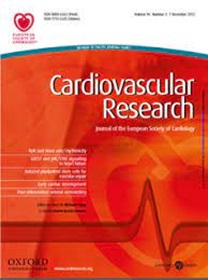Blood pressure management in secondary prevention after myocardial infarction
IF 13.3
1区 医学
Q1 CARDIAC & CARDIOVASCULAR SYSTEMS
引用次数: 0
Abstract
The management of blood pressure (BP) in secondary prevention after acute myocardial infarction (AMI) remains a matter of debate. Since no dedicated trials have specifically addressed BP control in patients recovering from an acute coronary syndrome, there are no evidence-based, prospective data to define precise BP targets in this population. Moreover, major international guidelines devote surprisingly little attention to BP management in the post-AMI setting, despite its recognized importance in reducing recurrent cardiovascular events. On one hand, BP-lowering may improve cardiac function by reducing afterload and myocardial oxygen consumption and by facilitating favorable ventricular remodeling. On the other, the concept of a J-shaped association—whereby excessive lowering of diastolic blood pressure (DBP) may paradoxically increase cardiovascular risk, particularly in the early post-acute myocardial infarction (AMI) period—remains a matter of ongoing uncertainty. Despite decades of investigation, this issue has not been definitively resolved and continues to raise debate within both the scientific community and among clinicians. In this review, we examine the current evidence supporting BP control in the context of secondary prevention following acute myocardial infarction (AMI), with an updated focus on the ongoing debate surrounding the potential implications of the J-shaped phenomenon.心肌梗死后二级预防中的血压管理
急性心肌梗死(AMI)后二级预防中血压(BP)的管理仍然是一个有争议的问题。由于没有专门的试验专门针对急性冠状动脉综合征恢复期患者的血压控制,因此没有基于证据的前瞻性数据来确定这一人群的精确血压目标。此外,令人惊讶的是,主要的国际指南很少关注ami后环境中的血压管理,尽管它在减少心血管事件复发方面具有公认的重要性。一方面,降血压可能通过减少后负荷和心肌耗氧量以及促进有利的心室重构来改善心功能。另一方面,j型相关性的概念,即过度降低舒张压(DBP)可能矛盾地增加心血管风险,特别是在急性心肌梗死(AMI)后早期,仍然是一个不确定的问题。尽管经过数十年的研究,这个问题仍未得到明确解决,科学界和临床医生之间的争论仍在继续。在这篇综述中,我们研究了在急性心肌梗死(AMI)后二级预防的背景下支持血压控制的现有证据,并对围绕j型现象的潜在影响的持续争论进行了更新。
本文章由计算机程序翻译,如有差异,请以英文原文为准。
求助全文
约1分钟内获得全文
求助全文
来源期刊

Cardiovascular Research
医学-心血管系统
CiteScore
21.50
自引率
3.70%
发文量
547
审稿时长
1 months
期刊介绍:
Cardiovascular Research
Journal Overview:
International journal of the European Society of Cardiology
Focuses on basic and translational research in cardiology and cardiovascular biology
Aims to enhance insight into cardiovascular disease mechanisms and innovation prospects
Submission Criteria:
Welcomes papers covering molecular, sub-cellular, cellular, organ, and organism levels
Accepts clinical proof-of-concept and translational studies
Manuscripts expected to provide significant contribution to cardiovascular biology and diseases
 求助内容:
求助内容: 应助结果提醒方式:
应助结果提醒方式:


